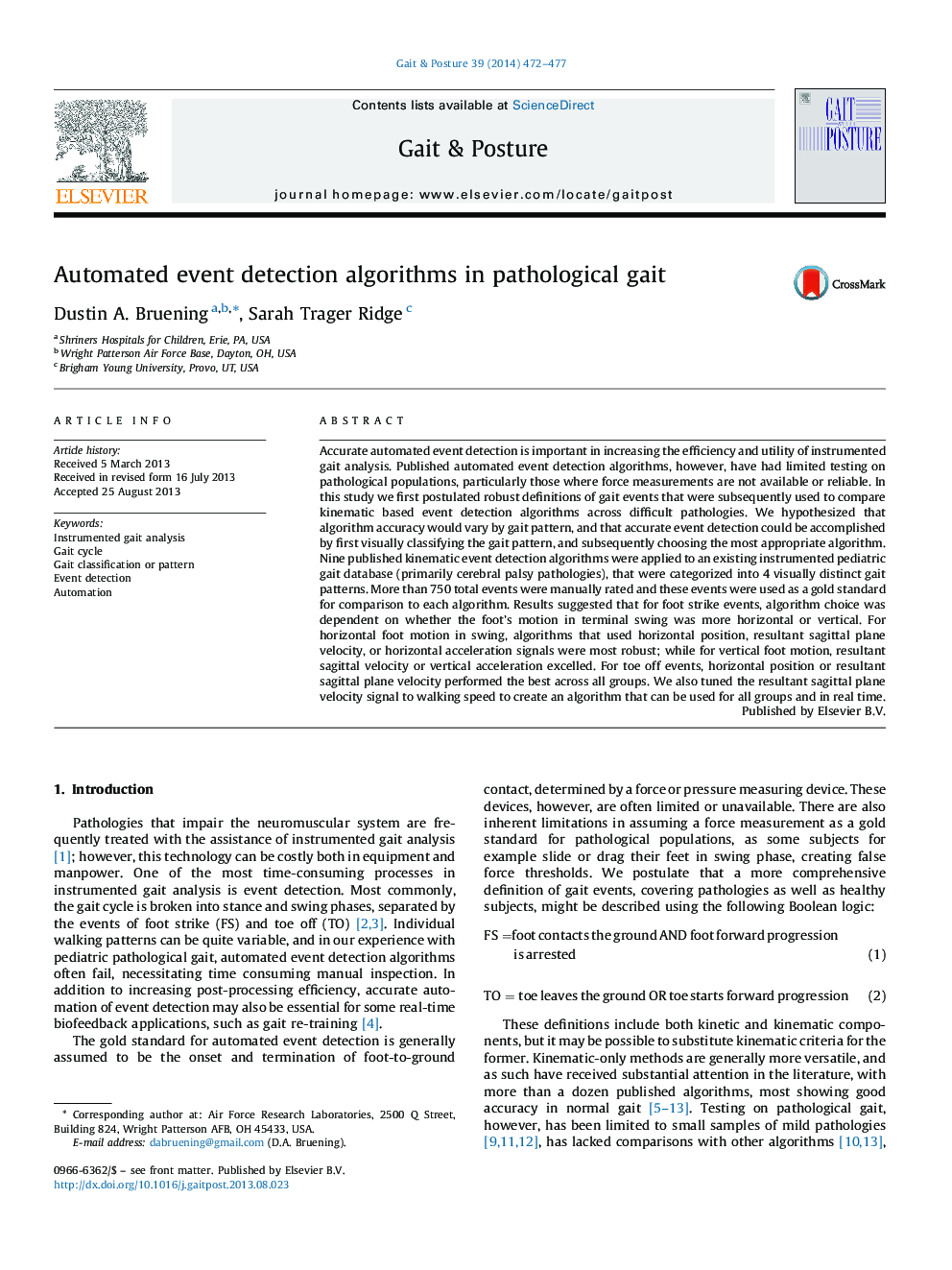| کد مقاله | کد نشریه | سال انتشار | مقاله انگلیسی | نسخه تمام متن |
|---|---|---|---|---|
| 6207093 | 1265653 | 2014 | 6 صفحه PDF | دانلود رایگان |
- Gait analysis efficiency can be increased by accurate automated event detection.
- We postulate comprehensive event definitions for pathological gait.
- Foot strike algorithms depend on whether motion is more horizontal or vertical.
- Sagittal plane resultant velocity is a potentially versatile signal for events.
Accurate automated event detection is important in increasing the efficiency and utility of instrumented gait analysis. Published automated event detection algorithms, however, have had limited testing on pathological populations, particularly those where force measurements are not available or reliable. In this study we first postulated robust definitions of gait events that were subsequently used to compare kinematic based event detection algorithms across difficult pathologies. We hypothesized that algorithm accuracy would vary by gait pattern, and that accurate event detection could be accomplished by first visually classifying the gait pattern, and subsequently choosing the most appropriate algorithm. Nine published kinematic event detection algorithms were applied to an existing instrumented pediatric gait database (primarily cerebral palsy pathologies), that were categorized into 4 visually distinct gait patterns. More than 750 total events were manually rated and these events were used as a gold standard for comparison to each algorithm. Results suggested that for foot strike events, algorithm choice was dependent on whether the foot's motion in terminal swing was more horizontal or vertical. For horizontal foot motion in swing, algorithms that used horizontal position, resultant sagittal plane velocity, or horizontal acceleration signals were most robust; while for vertical foot motion, resultant sagittal velocity or vertical acceleration excelled. For toe off events, horizontal position or resultant sagittal plane velocity performed the best across all groups. We also tuned the resultant sagittal plane velocity signal to walking speed to create an algorithm that can be used for all groups and in real time.
Journal: Gait & Posture - Volume 39, Issue 1, January 2014, Pages 472-477
